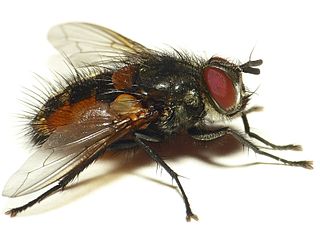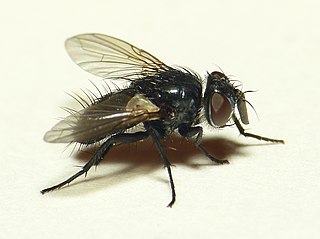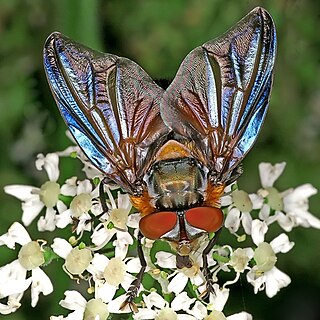
Carcelia is a genus of flies in the family Tachinidae.
Chetogena is a genus of flies in the family Tachinidae.
Eloceria is a genus of flies in the family Tachinidae.
Estheria is a genus of flies in the family Tachinidae.

Exorista is a genus of flies in the family Tachinidae.

Nemoraea is a genus of flies in the family Tachinidae.

Siphona is a genus of flies in the family Tachinidae.
Thelyconychia is a genus of flies in the family Tachinidae.

Winthemia is a genus of flies in the family Tachinidae.

Zeuxia is a genus of flies in the family Tachinidae.

Linnaemya is a genus of flies in the family Tachinidae.

Loewia is a genus of flies in the family Tachinidae.

Dufouriini is a tribe of flies in the family Tachinidae.

Exoristinae is a subfamily of flies in the family Tachinidae. Most species are parasitoids of caterpillars.

Blondeliini is a tribe of parasitic flies in the family Tachinidae. Larvae are parasitoids of other insects, mostly beetles and caterpillars. Although nearly cosmopolitan, its greatest diversity is in the New World and especially in South America.

Eryciini is a tribe of flies in the family Tachinidae.

Goniini is a tribe of parasitic flies in the family Tachinidae. Members of Goniini are distinguished from other Tachinidae by laying small "microtype" eggs that hatch only after being ingested by a host.

Phasiinae is a subfamily of flies in the family Tachinidae. Except for the small tribe Strongygastrini members of this subfamily attack only Heteroptera.

Tachininae is a subfamily of flies in the family Tachinidae.

Leskiini is a tribe of flies in the family Tachinidae.














